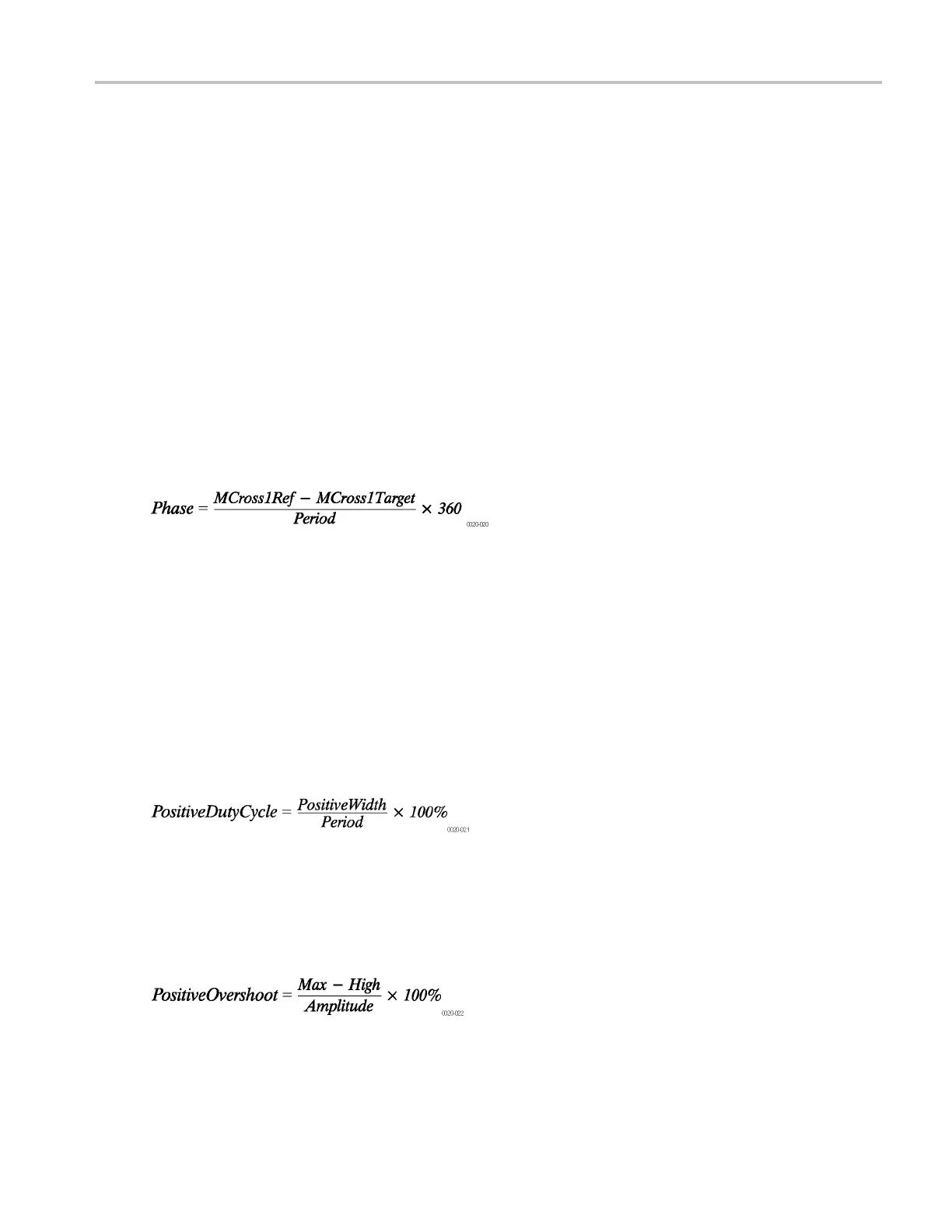Oscilloscope Reference Measurement algorithms
Phase
Timing measurement. The amount of phase shift, expressed in degrees of the target waveform cycle,
between the MidRef crossings of two different waveforms. Waveforms measured should be of the same
frequency or one waveform should be a harmonic of the other.
Phase is a dual waveform measurement; that is, it is measured from a target waveform to a reference
waveform. To get a specific phase measurement, you must specify the target and reference source s.
Phase is determined in the following manner:
1. The first MidRefCrossing (MCross1Target) and third (MCross3) in the source (target) waveform
are found.
2. The period of the target waveform is calculated (see Period above).
3. The first MidRefCrossing (MCross1Ref) in the reference waveform crossing in the same direction
(polarity) as that found MCross1Target for the target waveform is found.
4. The phase is determined by the following:
If the target waveform leads the reference waveform, phase is positive; if it lags, negative.
Phase is not available in the Snapshot display.
Positive duty cycle
Timing measurement. The ratio of the positive pulse width to the signal period, expressed as a percentage.
PositiveWidth is defined in Positive Width, following.
If Period = 0 or undefinedthenreturnanerror.
Positive overshoo t
Amplitude (voltage) measurement.
Note that this value should never be negative.
DSA/DPO70000D, MSO/DPO/DSA70000C, DPO7000C, and MSO/DPO5000 Series 735
